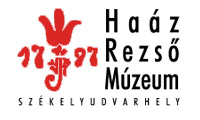Kovács Petronella (szerk.): Isis - Erdélyi magyar restaurátor füzetek 15. (Székelyudvarhely, 2015)
Mester Éva: Az egyszerű geometrikus elosztású ablakok védelme és megőrzésük fontossága
Abstracts István Bóna First aid conservation of Romanic frescoes in Pécsvárad In the early sixties Romanic frescoes were found by conservators in the Romanic chapel within the Pécsvárad castle. They are amongst the most valuable medieval paintings in the country. The frescoes were made after 1157 with Byzantine technique. The plaster contains no sand, but straw and chaff instead as filler in the lime matrix. There are two layers of plaster as the support of the paintings, a rough arriccio and a thin smooth intonaco. The technique of the paintings is a perfect Byzantine one. They are partly painted by fresco technique, but some colours are applied with secco technique. For example the blue colour applied on a black fresco layer (veneda) was made with secco technique, using natural ultramarine as the pigment. Most of the frescoes still lay under several lime layers, waiting for recovery. The condition of the building and the inner environment of it are bad enough not to recover the paintings at the moment. According to the author’s and his colleagues’ measurements, the walls are almost totally wet. The plaster is badly disintegrated and flakes at many places, notwithstanding the earlier efforts to save them from falling down. There are different edgings made during different earlier conservation campaigns. The edging plasters prove that new losses have been formed recently. In the year 2014 a conservation campaign was executed to try to save the frescoes, even if the main causes of the deterioration of them were not treated yet. The aim was to consolidate the disintegrated plasters, and fasten the loose parts on the wall. The main considerations were: not to prevent the future recovery of the frescoes and choose materials and techniques that can be applied on a totally wet wall. Some applied materials are probably new in the mural conservation; at least the author has no information about the former application of them. For the consolidation of the powdery plaster and paint layer, the Aquazol 200 or Aquazol 500 was applied, dissolved in ethyl alcohol (2,5%). Some cases the Porosil ZTS colloidal silicate was used, diluted in water {Porosil. water 1:10). For grouting basically three systems were selected and used according to the possibilities and aims. In case of the delaminations without holes, or with very narrow gaps between the layers, the Porosil ZTS mixed with fine quartz powder was generally effective. In cases of delicately painted places the mixture of Aquazol and the fine quartz powder was used instead. In case of big delaminated areas, after a pre-consolidation by Aquazol, the Vapo inject 0,1 industrial grouting material was effective. This lime based material doesn’t contain Portland cement, so it is perfectly compatible with the lime plaster. The reason to use such a wide selection of materials is the fact, that the conservators had a lot of different problems to solve. Sometimes the water based materials did not penetrate into the gaps, these cases the Aquazol dissolved in alcohol was more effective. The Porosil is an inorganic binding media, so it is preferable theoretically. But it can stick together the paint and the lime layer covering the frescoes. These cases the Aquazol proved to be a reasonable solution. The Aquazol is readily solvable in series of solvents. Traslated by: István Bóna Bogdan Ungurean Restoration of the mural painting on the sanctuary ceiling of the Banu church in Iaşi The paper presents the particularities of a conservation program on a mural painting fragment. The painting is situated in the altar's vault of the Banu church in Iaşi which is also known as The Sunday of all saints’ church. The reconstruction works on the building in the year 2010 made inevitable the preventive strengthening and conservation of the mural painting on the sanctuary ceiling. Besides some historical data on the monument, information on the original technique of execution of the painting and the state of conservation, data are presented concerning the type of interventions undertaken in the course of the restoration process of this 'al secco’ painting. Traslated by: Bogdan Ungurean Fruzsina Bencze Restoration of the portrait of William II, Prince of Orange, and his Bride, Mary Stuart. Copy after the original painting by Anthony Van Dyck in 1641 In the academic year of2013/2014 the author studied with an Erasmus scholarship at the Hungarian University of Fine Arts, where she restored this painting as her examination work of the year. The painter and the date of the creation are unknown, the artifact has been painted presumably in the 19—20th century in the Hungarian Academy of Fine Arts. It belongs to the Archive Painting Collection of the university. The restoration of the painting represented a difficult task due to its large size (182x 142,5 cm) and its very poor condition. In 1995, on account of the lack of space, the painting was placed in the boiler room of the basement, 104
